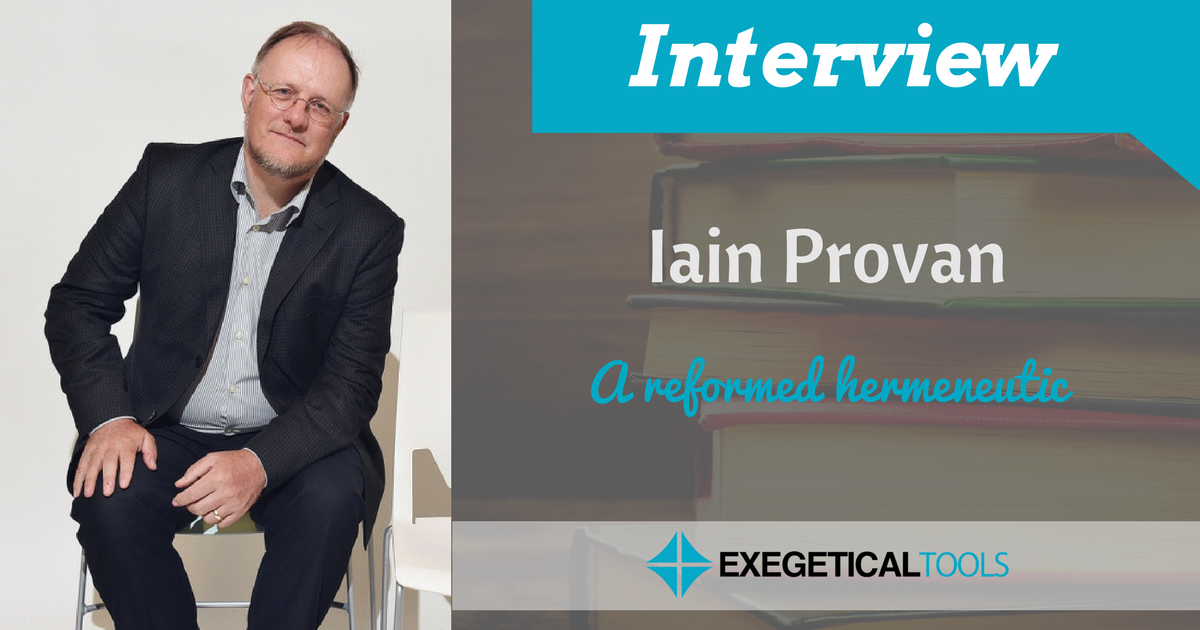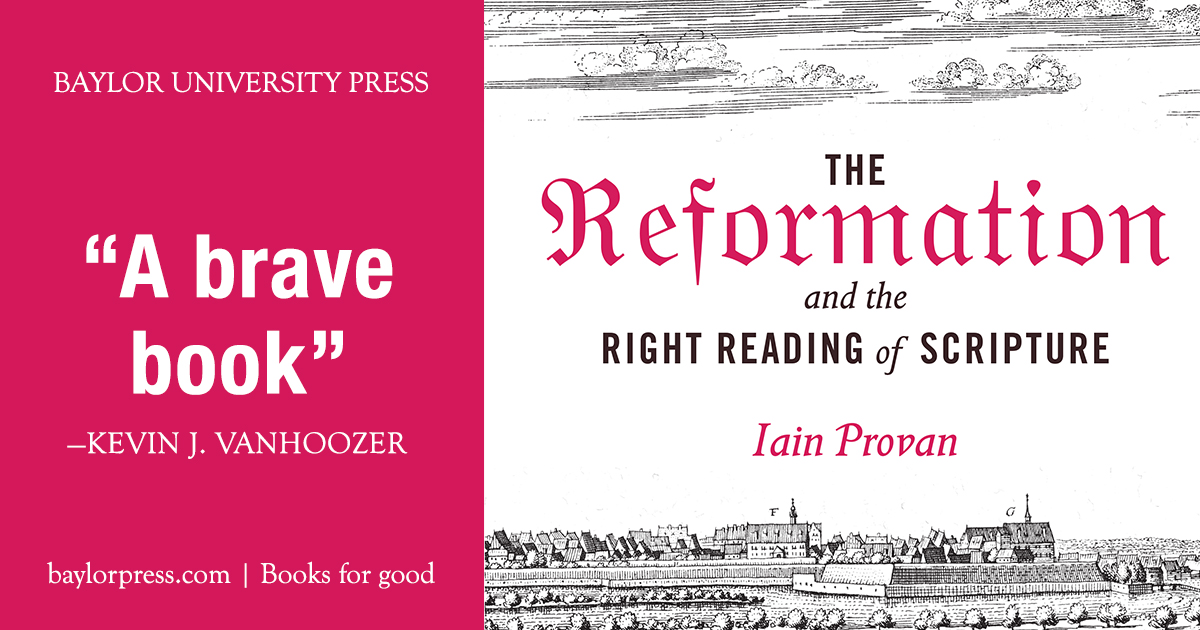
In previous posts, we shared about Iain Provan’s new book The Reformation and the Right Reading of Scripture, in which he argues for a “reformed,” literal hermeneutic. (And he does well to explain what literal means.) Dr. Provan was kind enough to answer a few of our questions about his book and to help us understand hermeneutics a little better.
Exegetical Tools
You write in your book that you went to Erfurt in Fall 2015 to research and start writing this book. How did your travel in the city contribute to your project, and what do we all need to be sure to do when we visit Erfurt?
Iain Provan
Erfurt is one of the most important places in the Martin Luther story. It’s where he began life as an undergraduate student, and it’s where he entered the Augustinian monastery after his “thunderstorm experience” at nearby Stotternheim. Much of his journey as a later “Protestant” begins in Erfurt. It was a great context for writing the book – just to BE there, in the midst of his story. If you visit, do not miss the remains of the monastery, the still-standing cathedral where Luther was ordained as a priest, and of course the “thunderstorm site” in what are now the suburbs.
ET
Ok, to the book. Let’s start with the big fish, if you don’t mind me playing devil’s advocate. You argue for a literal reading of Scripture, but literal in the sense of the literal communicative intent of the original authors. You critique the allegorical methods of the fathers. How would you respond to someone who complained that you’re casting off a millennium of the church’s hermeneutical method? Are you saying no good can come from allegorizing Scripture?
Provan
Well, the Fathers all agreed on the importance of establishing the literal sense of the biblical text. Where they already differed from each other (well before we get to the Reformation) was on the matter of whether there were further senses, and when it was legitimate to invoke these. We already find robust criticism of allegorizing among the Fathers, and even Augustine, who does deploy it frequently, is already fully aware in On Christian Doctrine of the problems that it raises. The argument of much of that book is actually robustly FOR literal reading. So my answer would be that I don’t believe I AM “casting off a millennium of the church’s hermeneutical method” – I’m engaging critically and constructively with the tradition as the tradition itself demands of me! And as for “good” coming from the allegorical method – I’m afraid that the best I can say about that is that sometimes not much harm comes from it. But of itself it is intrinsically unstable and liable to lead us into places we should not go.
ET
In chapter 5, you argue that the NT authors read the OT literally in the sense you’re describing “literal.” You discuss a sampling of uses of the OT. Are there any uses of the OT that you don’t think are literal/contextual? If so, which ones, and does that hurt your thesis at all?
Provan
No, I don’t think that there are any uses of the OT in the NT that are CLEARLY not literal/contextual. But even supposing that there were a few (for the sake of the argument), it would not alter the reality that there is (even in this case) very little warrant in apostolic texts for the practice of reading the OT in ways other than literally, and this would suggest that we ourselves would do well to read literally almost all of the time.
ET
In chapter 22 you summarize the development of the canonical method and speak positively of it. Obviously there are different ways this method have been employed. One way has been to emphasize redactions and the formation of collections within the canon, and meaning is then drawn from the juxtaposition of books (e.g., the psalms or The Twelve) or the way an editor seems to have interpreted a book by adding little connecting clauses (e.g., in the Pentateuch). One criticism of this method is that it creates multiple meanings: that of the original author of a source, that of an editor who stitches sources together, and that of all further editors who stitch larger collections together. These meanings can potentially conflict, creating multiple inspired meanings that are contradictory to one another. So, a) do you like this type of canonical criticism (Childs is a great representative), and b) do you agree with this criticism, or how would you push back?
Provan
I think that Brevard Childs made a great contribution in his time and place to the recovery of reading Scripture as Scripture while taking seriously modern as well as more ancient scholarship in that reading. This does not mean that I entirely agree with how he approached the matter, however (and my book deals with this question), and I certainly see no reason to concede that the canonical process has created “multiple conflicting meanings” in Scripture.
ET
Finally, you’ve recently published Seriously Dangerous Religion (Baylor 2014, 500pp) and now this tome on a reformed hermeneutic. What else can we look forward to seeing from you in the next 5-10 years?
Provan
That’s a great question to which I do not yet have an answer! Ask me again in twelve months!!
Thanks very much to Dr. Provan for his time. You can find his book on Amazon, and it’s definitely worth the time it takes to read it.

